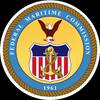New cargoes added to the IMSBC Code
By Aiswarya Lakshmi
January 15, 2016
In June 2015 the IMO’s Maritime Safety Committee adopted Resolution MSC.393(95) and amendments to the International Maritime Solid Bulk Cargoes (IMSBC) Code. Administrations may choose to apply the amendments on a voluntary basis from 1 January 2016.
However, the amendments will only become mandatory from 1 January 2017. A brief summary of the major changes to the Code can be found here.
The cargo entry of “Wood Pellets” is deleted from this Amendment. Amongst the various amendments made to the IMSBC Code, the following would be of interest to Members:
1. Bulk Cargo Shipping Names (BCSN) has been listed in three languages (English, Spanish and French).
2. A new Transportable Moisture Limit (TML) testing procedure for iron ore fines called the Modified Proctor/Fagerberg test is included in the amendments.
3. Substantial amendments have been made to the current Group C iron ore schedule introducing particle size distribution as well as the requirement of goethite content of 35% or more in iron ore fines to qualify as a Group C cargo.
4. An addition has been made to section 3. The section now requires the ship’s crew to conduct regular on-board operational fire safety risk assessments of cargo handling areas on self-unloading bulk carriers installed with internal conveyor systems.
5. Cargo information required to be furnished by the shipper under section 4.2 will now include information on whether the cargo is harmful to the marine environment. The cargo declaration form to be completed and signed by the shipper will also require such declaration therein.
6. A new section 14 has been added. The new section addresses the management of cargo residues Hazardous to the Marine Environment (HME) from ships under MARPOL regulations. The responsibility of classifying whether a cargo is HME lies with the shippers, as per section 3.4 of the guidelines.
7. For materials hazardous in bulk (MHB), notational references are introduced indicating the specific hazards which a certain MHB material possesses and the notational references will accompany the MHB designation under the “Class” cell in the individual cargo schedule. Note that the “Class” cell is mandatory.
8. A new provision for specially constructed cargo ships for powdery cargoes (new section 7.3.3) and exempting these ships as well as specially constructed or fitted cargo ships from certain requirements pertaining to Moisture Content (MC) and Transportable Moisture Limit (TML).



